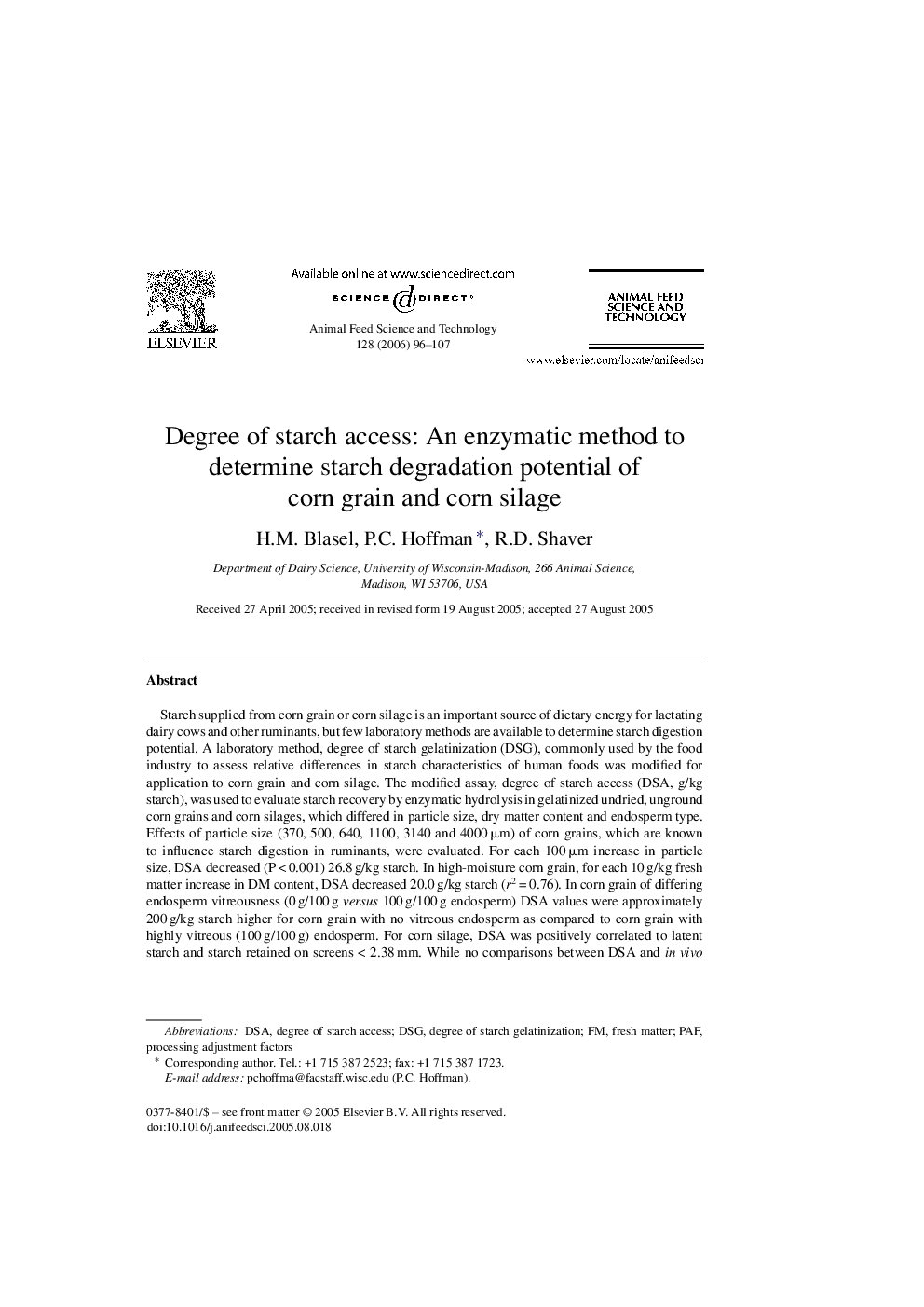| Article ID | Journal | Published Year | Pages | File Type |
|---|---|---|---|---|
| 2421190 | Animal Feed Science and Technology | 2006 | 12 Pages |
Starch supplied from corn grain or corn silage is an important source of dietary energy for lactating dairy cows and other ruminants, but few laboratory methods are available to determine starch digestion potential. A laboratory method, degree of starch gelatinization (DSG), commonly used by the food industry to assess relative differences in starch characteristics of human foods was modified for application to corn grain and corn silage. The modified assay, degree of starch access (DSA, g/kg starch), was used to evaluate starch recovery by enzymatic hydrolysis in gelatinized undried, unground corn grains and corn silages, which differed in particle size, dry matter content and endosperm type. Effects of particle size (370, 500, 640, 1100, 3140 and 4000 μm) of corn grains, which are known to influence starch digestion in ruminants, were evaluated. For each 100 μm increase in particle size, DSA decreased (P < 0.001) 26.8 g/kg starch. In high-moisture corn grain, for each 10 g/kg fresh matter increase in DM content, DSA decreased 20.0 g/kg starch (r2 = 0.76). In corn grain of differing endosperm vitreousness (0 g/100 g versus 100 g/100 g endosperm) DSA values were approximately 200 g/kg starch higher for corn grain with no vitreous endosperm as compared to corn grain with highly vitreous (100 g/100 g) endosperm. For corn silage, DSA was positively correlated to latent starch and starch retained on screens < 2.38 mm. While no comparisons between DSA and in vivo starch digestibility exist, the DSA assay may be useful as an index for evaluating differences in starch digestion potential of corn and corn silage fed to ruminants.
